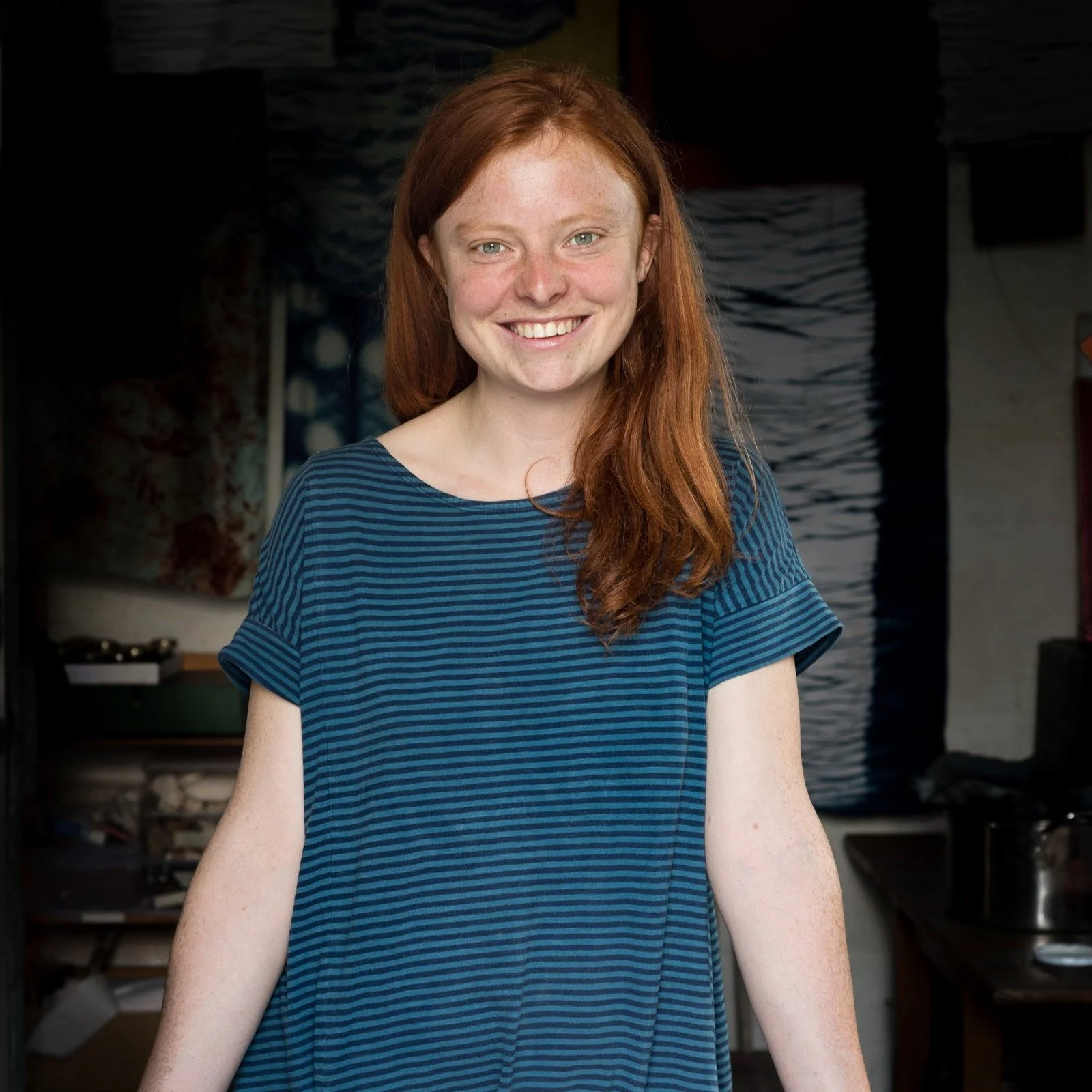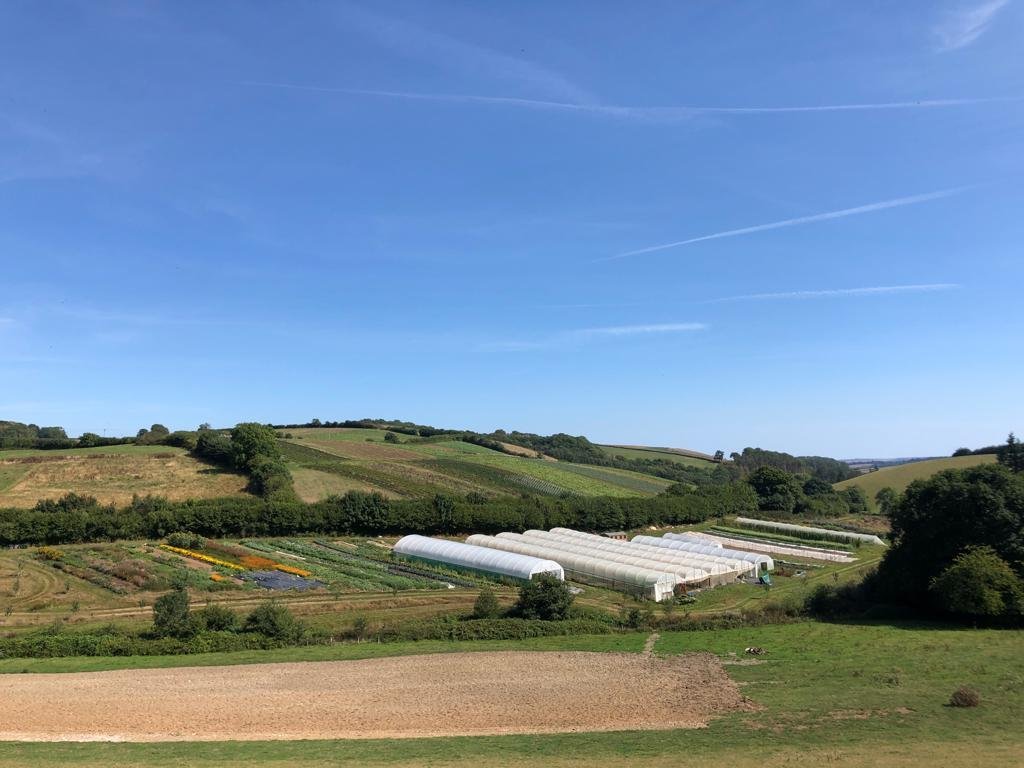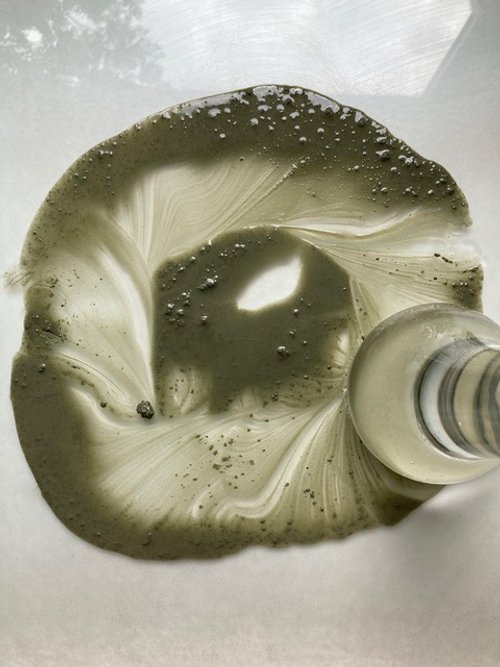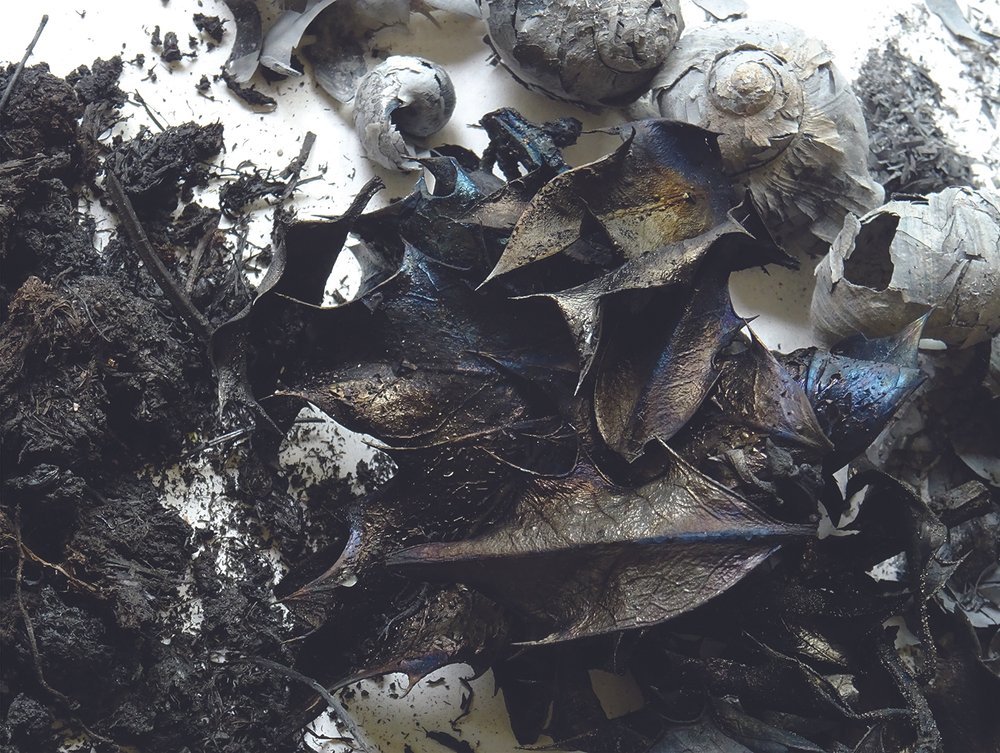
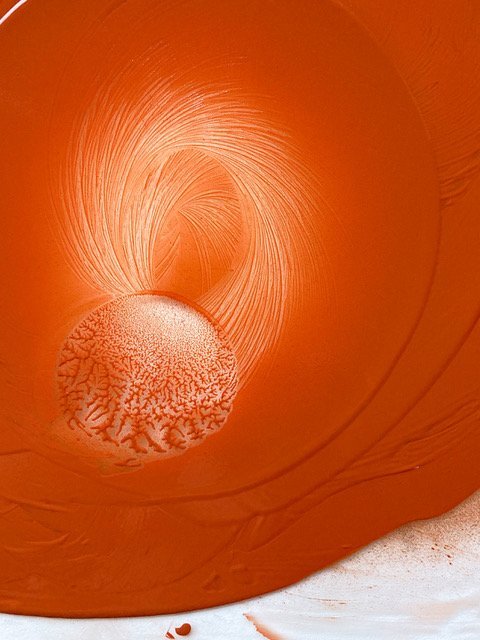
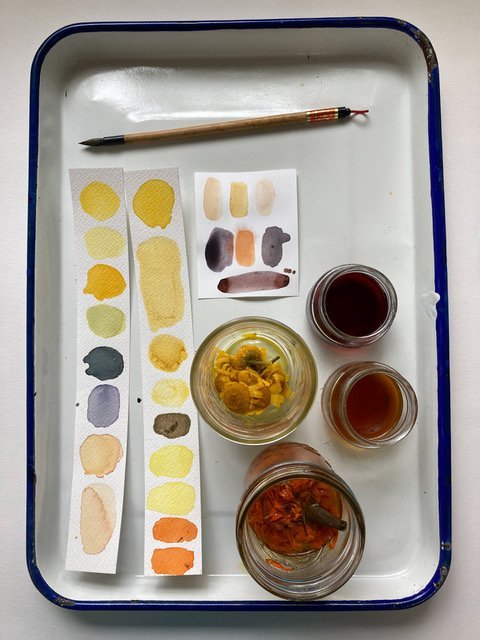
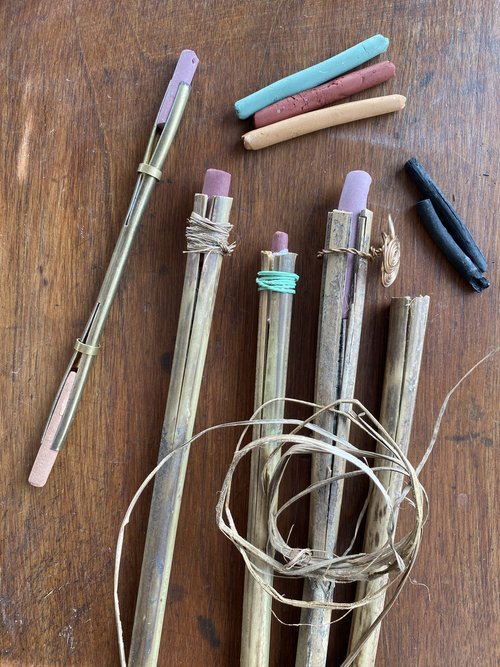
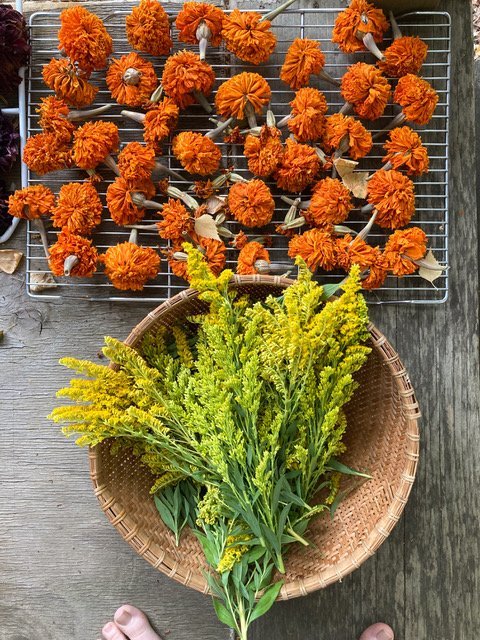

Natural Colour Making
For Artists
An Online Year Course
October 2024 - November 2025
REGISTRATION OPEN
All past teaching sessions are available as recordings. This course will not be repeated as a live course.
This year-long course is sharing techniques for making natural art materials for drawing, painting, and printmaking on paper from earths, plants, and fungi. Bringing together a unique faculty of teachers who will work together to share the foundational best practices for working with plant and earth based colour. Starting with the raw materials and creating a tool kit of watercolours, and traditional paints, inks, pastels, and crayons in a rainbow of colours.
This course is designed to be accessible to beginners, as well as those who have already started making natural art materials. We will start from the basics, and then go into more depth with these processes, building skills & knowledge over the year. Whether you are as established artist looking to transition your practice, or a complete beginner just starting out on your creative journey, or somewhere in between, all are welcome to join the group.
Through these classes, you will learn how to make a whole spectrum of colours to add to your artist tool kit. From indigo blues, to charcoal blacks, red earths of Devon, and purple mushrooms and more. You might have clear intentions to make natural colours for a particular project, or you might enjoy more open ended experimentation; it is really up to you what you make from this course and what you feel inspired to create in response to the course material.
Subscribe to get access now
Year Long Programme Overview:
Year Course members will be able to attend the sessions live and will have two years to access the recordings. Recordings of the classes will be available to non-members for two months after each live event. The opening and closing sessions are available exclusively for the members.
Course Launch - Tuesday October 22nd 2024 4-6pm BST (Recording Available)
Art Materials Fundamentals, Binders, And Earth Pigments - With Lucy Mayes - Tuesday 12th November 4-6pm GMT (Recording Available)
Botanical Inks & Modifiers - With Carolyn Sweeney - Tuesday 10th December 4-6pm GMT (Recording Available)
One Plant, Three Shades: Value and Yield of Lake Pigments - With Natalie Stopka - Tuesday 28th January 4-6pm GMT (Recording Available)
Growing Dye Plants - With Sophie Holt - Tuesday 18th February 4-6pm GMT (Recording Available)
Watercolour Paint Making - With Carolyn Sweeney - Tuesday 18th March 4-6pm GMT (Recording Available)
Egg paints / traditional media - With Caroline Ross - Tuesday 15th April 4-6pm BST (Recording Available)
Pastel Making - With Caroline Ross - Tuesday 13th May 4-6pm BST (Recording Available)
Charcoal: All the wonderful tones of black available to us through charring - With Annie Hogg - Tuesday 10th June 4-6pm BST
Indigo Pigment Extraction & Maya Blue - With Natalie Stopka - Tuesday 22nd July 4-6pm BST
Introduction To Mushroom Colour For Inks, Paints - With Julie Beeler - Tuesday 26th August 4-6pm BST
Oil Based Printing Inks With Mushroom Colour - With Julie Beeler - Tuesday 30th September 4-6pm BST
Exploring processes and critical thinking around practice - With Annie Hogg - Tuesday 14th October 4-6pm BST
Closing - An online gathering with all teachers and participants for final reflections and questions - Tuesday 18th November 4-6pm BST
Extra Resources
Earth Pigment Deep Dive Class Recordings and PDF - By Caroline Ross
Wax Crayon Making Class Recording - By Flora Arbuthnott
Plant Guide for Paints & Inks including a guide to poisonous plants in the UK to avoid - By Flora Arbuthnott
Mushroom Guide By Julie Beeler
A General Equipment list and suppliers
A reading list
Time Commitments:
The live demonstrations will be two hours every month. You can either join live or watch the recordings in your own time.
The study groups are a two hour commitment every month to joining a live online group.
In order to practice the techniques in your own time, this will requite 6-12 hours per month of studio practice. The course is really what you make it. Sometimes people spend the first year of the course just taking in the information, but if you can find the time to practice the techniques each month, you will get more from the course. You will have access to the class recordings for two years, so you can return to the material in your own time.
Meet the Team
The Session Details:
Introduction Session - Facilitated by Flora Arbuthnott
Tuesday October 22nd 2024 4-6pm BST
In this live group session to launch the course, there will be introductions from the teachers and an overview of the course.
This session will be covering all you need to feel confident with getting started. Including: An introduction to earth pigment sourcing from Caroline Ross; an introduction to sourcing plants with Carolyn Sweeney, Natalie Stopka will share some guidance on plant foraging and invasive species, and an introduction to mushroom colour with Julie Beeler.
Annie Hogg will share her tips on setting up your studio to work for natural colour making, with guidance from Lucy Mayes on studio essentials - with tips on setting up a workspace when you have limited space.
This session will give you an overview of the year ahead, a good sense of what equipment and materials you will need to source, and where you can get these from.
Art Materials Fundamentals, Binders and Pigments With Lucy Mayes
Tuesday 12th November 4-6pm GMT
We know that pigment making is a moving, working body of knowledge that has an untold amount of connections and crossovers with a multitude of different disciplines. As artists we amass huge amounts of specialist knowledge and process this through our unique lenses to create emotive experiences. I believe that knowing your materials intimately can create more interesting art and much needed empathy with our more than human counterparts. Join me for this session to expound and explain fascinating goings-on in our hand made art materials.
Have you wondered what is really happening when paint dries? and why do some paints dry faster than others? Do you ponder over why your hand-made botanical inks create unusual granulating effects? What minerals and impurities could be in your earth pigments - and organisms!? How urine can create a multitude of different pigments? In this session Lucy will explore what is physically and chemically happening to our art materials as we use them. Using examples from her research she will deliver useful information about pigment particle morphology, what makes a binding medium work, historical examples and modern replacements & technologies. For the past 10 years Lucy has gleaned useful and enlightening material from diverse sources & and she hopes to share them with you.
This session will equip participants with useful knowledge & understanding relating to the experiences they might have whilst using hand-made pigments, paints and inks. It will aid creatives with a technical vocabulary in order to explain and present what is happening chemically and physically to their art materials as they use them to bring about deeper understanding of their work. This 2 hour session is by no means a complete breakdown of the fundamentals of pigments and binders ( which would be several life's work!) but serves to communicate comprehensive examinations of material transformations through the use of examples Lucy has personally worked with or experienced. The session is designed to inspire others to think deeper about their own worlds of colour and paint.
Supporting Facilitator: Caroline Ross
Botanical Inks & Modifiers With Carolyn Sweeney
Tuesday 10th December 4-6pm GMT
Making botanical inks is one of the simplest ways to use plant color. In this session we’ll focus on plants that make strong botanical inks. Depending on the plant you are using the method of ink making may be as simple as making a cup of tea or could involve more prolonged simmering. We’ll also talk about various modifiers that can be added to the ink either in the bottle or on the page to shift and enhance the colour. Often one plant can yield multiple colours of ink with the use of different modifiers. You’ll leave this class with all the knowledge you need to make some botanical inks of your own.
Supporting Facilitator: Natalie Stopka
Colour Focus: Orange
One Plant, Three Shades: Value and Yield of Lake Pigments
With Natalie Stopka
Tuesday 28th January 4-6pm GMT
Lake pigments are made from natural dyes, and are a great way to use every drop of color by converting it to a shelf-stable powder. These pigments can be concocted in varying hue, value, and translucency, useful for making an array of natural artist’s materials with specific working properties. Focusing on the variety of color that can be coaxed from a single plant source, we’ll produce three different pigments. Participants will learn the chemistry controlling vibrancy and opacity, and receive instructions for extrapolating Natalie’s master recipe to any mordant dye.
Learning Outcomes
How to extract, precipitate, and wash lake pigments
Mordant and alkali choices to control lightfastness, vibrancy, and opacity
Calculating the anticipated yield of a lake
What is pH and how to control it
How to dry and store pigments
Supporting Facilitator: Julie Beeler
Colour Focus: Yellow
Growing Plants For Colour
With Sophie Holt
Tuesday 18th February 4-6pm GMT
Join Sophie Holt, the Founder of 'Pigment - Organic Dyes,' for a session on growing plants for colour, where she will share her expertise in creating and managing a productive dye garden.
Introduction to PIGMENT Organic Dyes CIC
Setting up a growing space: The fundamentals for success at any scale
Choosing plants: Balancing space with quantities
Crop planning and rotation strategies
Sophie's top 5 dye plants and their characteristics
Techniques for propagation and cultivation
Navigating growth challenges, including pests and diseases
Essential tools for the dye garden
Harvesting and processing techniques, including timelines and studio setup
Q & A
Supporting Facilitator: Flora Arbuthnott
Watercolour Paint Making
With Carolyn Sweeney
Tuesday 18th March 4-6pm GMT
Come to this session to learn about the ingredients and techniques to make your own watercolour paint from scratch. We’ll cover pigment, watercolour binder, and how to repurpose household items into mulling equipment. We’ll also spend time mulling paint on a glass slab so you can see all the steps from pigment to paint. You’ll learn how to troubleshoot the process and create artist quality watercolour paint.
Supporting Facilitator: Caroline Ross
Colour focus: Pink
Egg Paints & Traditional Painting Media
With Caroline Ross
Tuesday 15th April 4-6pm BST
Eggs are one of the oldest and most reliable painting media, used extensively the world over, offering unparalleled luminosity of colour, longevity, and ease of use. Using organic, free range eggs, we will make tempera (egg yolk), glair (egg white) and egg / gum Arabic mix media. We will look modern broad ways to use the paints to enable you to replace acrylics in many instances, layer on top of watercolour sketches, as well as their uses on paper, parchment and wood. (In contrast, the traditional method of using tempera in many layers of tiny strokes on gesso boards will be discussed, but not demonstrated, as it is a long and beautiful process, taking at least a week to cover!) We will make vegan alternatives to these media which I developed originally from kitchen experiments and refined over years. We will look briefly at other traditional media such as glue paint, casein (cheese paints), drying oils and where they might be appropriate to the contemporary earth-friendly artist, and give pointers and resources for further study in those areas. We will also cover how several of the recipes we make can be used diluted as pastel fixatives.
Learning outcomes: After this session you will be able to make tempera, glair and veglair (vegan glair) mediums and know how to use them for painting on paper and other prepared surfaces. You will have an overview of other traditional and natural paint mediums and which ones can be combined together to good effect. You will know how to dilute some of your mediums for use as drawing fixatives for use on charcoal and pastel works.
Supporting Facilitator: Lucy Mayes
Colour focus: Green
Pastel Making
With Caroline Ross
Tuesday 13th May 4-6pm BST
Pastels are the purest form of coloured dry media, well known for their luminous quality on paper. They are also an excellent way to transport pure pigments for other uses. We will look at naturally occurring lump media such as chalk and sanguine (red ochre) and sources of pigments, as well as how to assess pigments sources and bought materials for pastel-making. We will learn how to make several types of pastel: hard, similar to 'Conte' pastel, traditionally for toning and shading; soft traditional artists' pastels, and my own recipes for thin, graphic pastels ideal for detailed drawing when used with an improvised holder. We will look at different moulding and rolling techniques, shapes and sizes, to make the best tool for your own art practice. We will also cover natural fixatives, suitable for use on pastel and charcoal drawings.
Learning outcomes: After this session you will be able to source, assess and process pigments for pastel making use, know what to use as binders and be able to create beautiful pastels ideal for your own personal artistic requirements. You will also know how to choose suitable papers and surfaces to work on with your pastels, and make effective natural fixatives to protect your drawings.
Supporting Facilitator: Annie Hogg
Colour Focus: Red
Charcoal: All the wonderful tones of black available to us through charring
With Annie Hogg
Tuesday 10th June 4-6pm BST
In this session we will be creating black pigment through the transformative action of charring. We will see the huge array of greys and blacks available to us from different sources using this technique. We will engage other sources for black pigment, well exercised throughout history for our pallet, investigating pigments such as lamp black and deep diving into iron gall ink. During the session we will discuss the sculptural applications of the charring techniques and how these might be applied.
Learning Outcomes:
*Sustainable foraging outlined, specifically with oak galls.
*Health and safety specific to charring and bringing the carbons to pigment.
*How to char for drawing sticks, pigment and sculpture/3D applications.
*Materials which are suitable to the process for further experimentation.
*Making water-based ink and paint from carbon blacks. Oil and other mediums will be discussed.
Three techniques for working with our pigment will be covered as demonstrations.
*Introduction to the idea of votive charring as a deep ecology practice.
*Introduction to historical black pigment sources and identifying their nature (oil, resin etc)
Supporting Facilitator: Natalie Stopka
Colour Focus: Black
Indigo Pigment Extraction & Maya Blue
With Natalie Stopka
Tuesday 22nd July 4-6pm BST
Indigo-bearing plants are easy to grow, and hide an intriguing secret: the colorless precursors to beautiful and beguiling blue pigment. With a little chemical know-how, the indigo blue is drawn out by fermentation. Natalie will share the process of harvesting, fermenting, and precipitating indigo pigment for homegrown blue. We’ll also learn to extend and stabilize our precious pigment by making Maya blue, a highly lightfast turquoise shade inspired by Mesoamerican artisanry.
Learning Outcomes:
Introduction to indigo varieties and growing tips.
Learn a fermentation extraction method for fresh of indigo.
Learn how to make Maya blue.
Supporting Facilitator: Carolyn Sweeney
Colour Focus: Blue
Introduction To Mushroom Colour
With Julie Beeler
Tuesday 26th August 4-6pm BST 2025
Curious about mushrooms for color? In this online virtual demonstration, designer, artist, educator and creator of the Mushroom Color Atlas, Julie Beeler, will teach you how to extract and unlock the universe of colors lurking inside fungi. Working with natural colorants is a time-honored, hands-on, rich experience. Learning to extract these natural colors—which requires making countless decisions with our eyes, hands, and aesthetic intuitions—gives us an intimate connection to the hues and their mushroom sources. The works we produce with the natural pigments we have created are imbued with the experience of that connection.
Julie will cover general mushroom pigment techniques and walk through the process of making a lake using different types of mushrooms. She will talk about basic mushroom identification skills for a variety of dye mushrooms, discussing habitat, ethical foraging and safety. She will demonstrate how to make watercolor paint using the lake pigment and you will see mushroom pigments can be used in a variety of forms ranging from oil paints, inks, crayons, pastels and printing making ink–perfect for any artist.
Supporting Facilitator: Carolyn Sweeney
Mushroom Colour For Inks, Paints, and Printing Ink
With Julie Beeler
Tuesday 30th September 4-6pm BST
The incredible colors held in mushroom pigments mirror the vast array of hues we can encounter in the natural world. Creating pigments from mushrooms yields a quantity and quality of colors that stand in stark contrast to the hues made from synthetic dyes. The colours produced from mushrooms seem to share a visual lineage—each hue transitions smoothly to the next in a sort of familial harmony.
In this online virtual demonstration, designer, artist, educator and creator of the Mushroom Color Atlas, Julie Beeler, will teach you how to extract and create a printmaking ink from mushrooms. She will cover general mushroom pigment techniques and walk through the process of transforming the pigment into an oil based ink for printmaking.
In an era when we are increasingly reliant on technology and corporate consumer goods, creating colorants from mushrooms feels like a radical act. Working hands-on with the fruits of the fungi kingdom is an opportunity to reorient ourselves toward renewable sources and sustainable practices.
Supporting Facilitator: Annie Hogg
Exploring Processes & Critical Thinking Around Practice
With Annie Hogg
Tuesday 14th October 4-6pm BST
In this session we will be considering our material choices as a tool in our creative work. Mining into history and modern developments, we will consider how many materials already come to us with a weight. Do we choose to further tease that out in our work, or to use it as a part of our own creative dialect?
We will consider routes to take with our materials to elevate their role out of pure colour givers, and into role of storytellers and myth makers. And discuss if such an approach has weight and value in our processes and practices.
Learning Outcomes
*Consideration of material choices in our work.
*Developing an authentic artist voice and language.
*Contemplating the work of some artists who work in this manner.
*Guidelines to begin basic research.
Supporting Facilitator: Julie Beeler
Closing Session
An online gathering with all teachers and participants for final reflections and questions.
Tuesday 18th November 4-6pm BST
Here is a list of everything required for the whole year if you were to choose to do every process. We recommend that you wait to procure equipment and materials until after each demonstration, so you can be sure to only get what you need.
Equipment
Palette knife
Muller and slab or glass paperweight and glass cutting board
Mortar & pestle
Pipette
Funnel
Masking tape
Spray bottle
pH test strips
Cloth/paper towels
Swatch paper or sketchpad, Watercolour paper
Tracing or thin paper
Waste packing cardboard
Paint Brushes
Marker pen
labels
Filtering
Geological sieves (40, 60, 80, 100 mesh), kitchen sieves
Ground coffee filters (8") or fine cloth strainer
Square of cheesecloth
Containers
Containers for inks and paints (jars, pots etc)
4 dropper bottles or small lidded jars
Empty watercolour paint pans or small containers such as shells for finished paint
Dye pot (1 quart) & Dye pot (1 gal)
Clean large and small bowls (at least 2 of each)
Small bowls
Tin can with well-fitted lid
Buckets
Utensils
Stick
Big stainless steel stirring spoon
Electric whisk or hand-turned egg beater
Fire tongs
Scissors
Equipment & Materials Overview
Heat Sources
Stove & sink access
Fire pit or stove
Measuring
Digital scale (metric)
Measuring jug, Measuring spoons
Small measuring spoons
Safety
Gloves
Dust mask or respirator style mask
Materials
Gum Arabic
Gum tragacanth
Cold pressed artist's linseed oil
Walnut oil
Safflower oil
Poppy oil
Iron sulphate
Ferrous sulfate (iron mordant)
Alum mordant (aluminum sulfate or potassium aluminum sulfate)
Citric acid, vinegar, or lemon juice
Soda ash (sodium carbonate)
baking soda (sodium bicarbonate)
Chalk (calcium carbonate)
Clove oil
Distilled water (1 gal)
2 eggs (organic, free range preferred)
Cannellini beans (1 can)
Powdered clays (selection of red, white, buff clay, kaolin, natural local dug, powdered chalk, fuller's earth)
Sepiolite (finely ground)
Rice or wheat starch
Sources of colour
Powdered artist's pigment (finer than 100 micron)
Pigment (mineral or lake)
Dye Plant material
Garden cuttings or found natural materials (e.g., twigs, acorns, bones)
Processed natural materials (e.g., linen cloth, paper, wine corks)
Dried dye mushrooms
Optional: botanical indigo powder, fresh Japanese indigo leaves
Optional: oak galls and iron (ii) sulphate
Growing, harvesting & preserving plant equipment
Plant labels
9cm plant pots
Module trays
Seed trays
Organic seed compost
Organic potting compost
Vermiculite
Watering can + rose
Planting trowel
Garden fork
Rake + pipes / row markers
Garden spade
Dehydrator
Brown paper bags
Garden gloves
Secateurs or shears
FAQs
I am wondering if the earth pigments & plants covered will apply to other parts of the world?
The teachings around earth pigments and plants are transferrable to anywhere in the world.
I would like to know how long the recordings will be available.
The recordings will be available for two years if you join the year course.
Will there be a possibility to ask questions if I will get some during the month in between the live sessions.
You can email in your questions to be shared with the course teachers.
How many hours roughly would the class take monthly so I can budget my time?
Two hours of video demonstration monthly
Two hours of optional study group monthly
I recommend 4-8 hours of studio time to practice the teaching material - but this is really up to you. You will have two years to work through the material in your own time.
Please could you include oil based ink making?
Yes, oil based printing inks will be covered.
How the payment will be made?
Payment is made via stripe or PayPal.
A PDF at the end of each class with book refs and content is something that helps me to focus more on the class
Yes, PDFs and reading lists will be included.
Could it be one big study group and then we find our fellow kin spirits and then break away? Possible art exhibition at the end of it?
You can use the discord group to connect with all the course members. The study groups are kept small so that there is enough time for everyone to have the time to share within the timeframe.
Lovely idea for an exhibition! We can see how we could bring this together if there is interest within the group.
Is part participation possible?
There are many short online courses available through Plants & Colour if you do not want to commit to the whole year.
Recordings of some of the demonstrations will be available to sign up to watch individually after the class dates.
It would be helpful if study groups could group together artists in terms of practice.
You can select which of the three study groups you would like join, you can find out more about the study group facilitators here to help decide which group is right for you.
Testimonials
-
Highly recommend this course, whether you are a beginner art material or experienced one. There is so much for everyone here. A great way to connect to our land.
-
I have learned so much around the science behind how pigments of all types work. I knew nothing when I started and now I feel confident enough to run beginner workshops on how to gather, process and use earth pigments as an artist.
-
Although I have a large, brought background, there are always new things to learn. I find that moste of the sessions have been excellent, including practical instructions and techniques. In addition there are wonderful technical information. Study group has been a delightful area for more learning, knowledge and ideas.
-
This course has been transformative. I have to come to this course as a mid lifer having not engaged in art making since primary school. It has given me the confidence to connect into my creativity and weave it into my everyday life. I'm building a stronger bond with my surroundings and feel empowered.
-
This course is so fulfilling. Being surrounded by wonderful, friendly, creative people that share your interest in colour from the natural world has been a tonic. I've learnt so much and the opportunities to develop are boundless! I feel like I'm learning about my place among the earth and plants in a new way and it's excellent.
-
What an excellent way to learn! I have so enjoyed this course. And my study group is populated by people I may never have met, but now I can't imagine not meeting monthly to discuss together what we are learning, experimenting with, and to celebrate our gains and ponder our challenges. Natalie is an amazing facilitator. I am very grateful.
-
A super course specifically for artists using mother earth's resources, making it with your own hands. 2 months ago a solid/supported/safe space for learning and exchanging questions and ideas. As a student you are not unique in your missteps/fumbles/failure to achieve the goal..there is a community to help trouble shot and guide...everyone was a novice at some time. So much grace.







